To date, our “It’s complicated” series has looked more specifically at different complications and functions of a timepiece, however with this article we are going to look at something more fundamental – George Daniels’ Co-axial escapement. This evolution is regarded as one of the most significant contributions to all of horology within the past two centuries, and in this article we will look at why.
What is the escapement and why is it so important?
In a mechanical watch movement, the function of the escapement is to ensure that the energy released by the mainspring is released (or escapes) at a steady ready rate, translating the rotational energy into impulses. These impulses are used to drive the oscillations of the balance wheel (the component often visible through a sapphire caseback, giving the impression that a watch is ‘breathing’), and, in turn, this ultimately drives the gears in the calibre, advancing the hands on the dial. The escapement is truly at the very heart of a mechanical watch.
The most common escapement used in a mechanical watch is a lever escapement, which was first invented by Thomas Mudge in around 1750. It entails a component known as a pallet fork, with two ‘pallets’ swinging back and forth, allowing the gear train to rotate only one increment at a time. This slow-motion video on our Youtube channel shows this in action:
Slow-motion lever escapement action
What you see here is one pallet pushing up and against its interlocking gear-tooth on one side to advance the gear and release its motion, and the other pallet simultaneously locking further rotation of the gear by engaging another gear-tooth. This ensures the gear advances at set increments and drives a regular pulse of balance wheel oscillations; it is the equivalent of a pendulum in clock and is the component which makes the ticking noise within a timepiece.
Mudge’s original lever escapement was improved upon incrementally until the early 1800s, however the fundamental principle of the escapement has remained largely unchanged since its inception and it was used in wristwatches from the early 1900s.
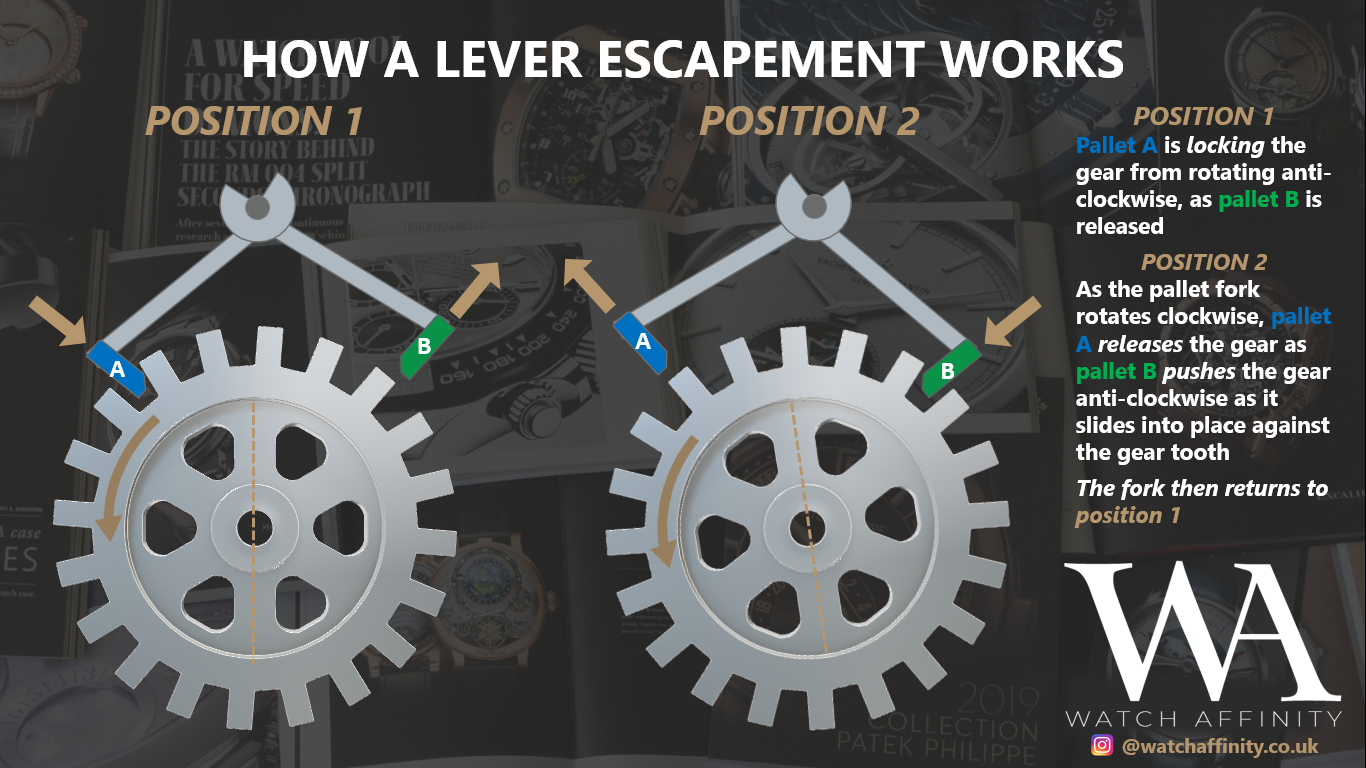
What is the problem with the lever escapements?
Well, it’s hard to say there is a problem per se with the lever escapement – indeed it has served very well for a great number of years and is still used in the vast majority of watch movements to this very day. That being said, there is always room for improvement. The challenge is how do you improve on something which is so hugely successful in a world where the margins for improvement are so small?
In identifying ‘the problem’ to fix, it is important to understand that lever escapements are not the only type of escapement. Just before Mudge invented the lever escapement, Pierre Le Roy invented the detent escapement in 1748. This escapement works by a single pallet directly pushing the gear-tooth around to create each impulse, as opposed to pushing up and against it – importantly creating less friction. However, with the detent escapement this push is applied in only one direction, and despite the detent escapement being incrementally improved by the likes of John Arnold in the late 1700s, the fundamental issues remained; the nature of the single-direction escapement renders it susceptible to knocks and shocks affecting the precision, as the escape wheel could advance when it should not.
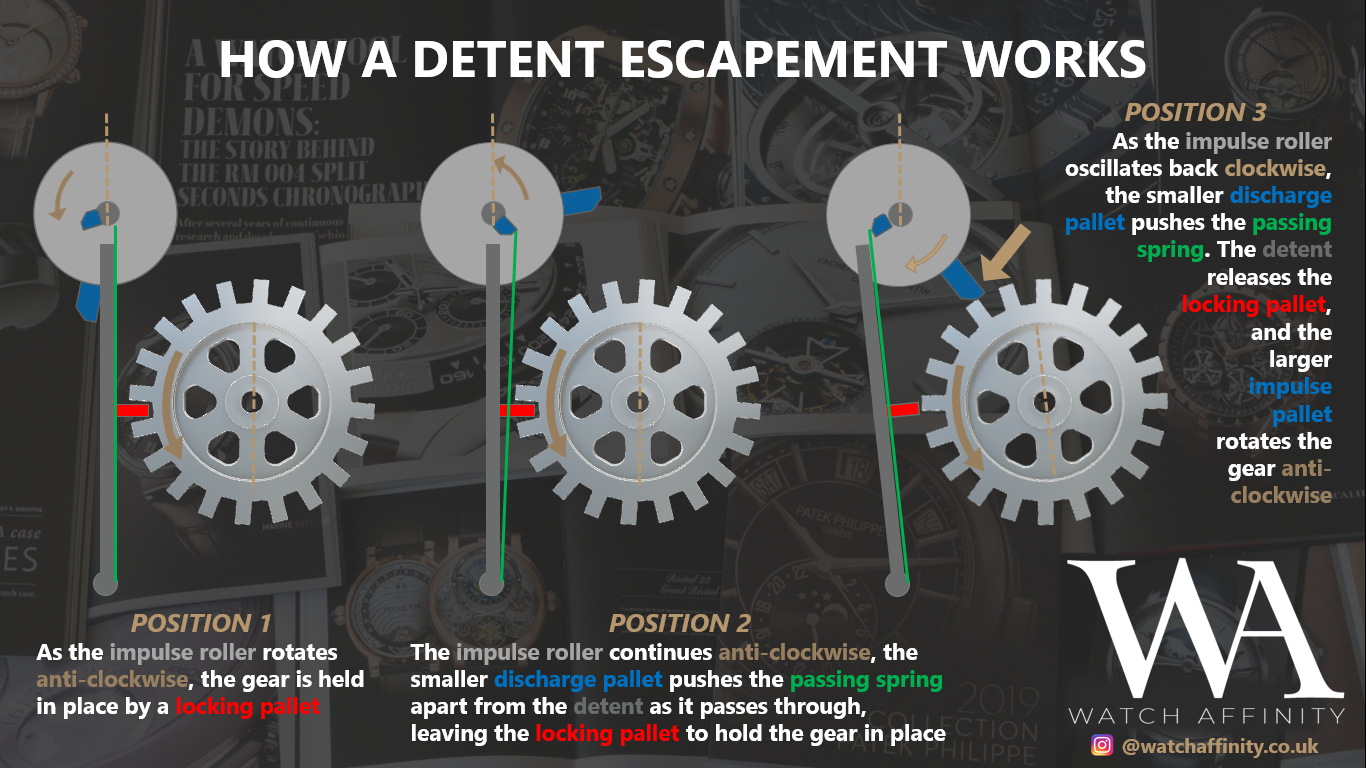
Additionally, as the escapement is not self-starting, it is possible for the rotation to surpass 360 degrees rotation per impulse if not stopped, which in turn also affects the precision and accuracy. Detent escapements subsequently tended to be deployed in marine chronometers, where the dial was horizontal and the mechanism was encased in a large box, thus protecting the detent escapement from its weaknesses.
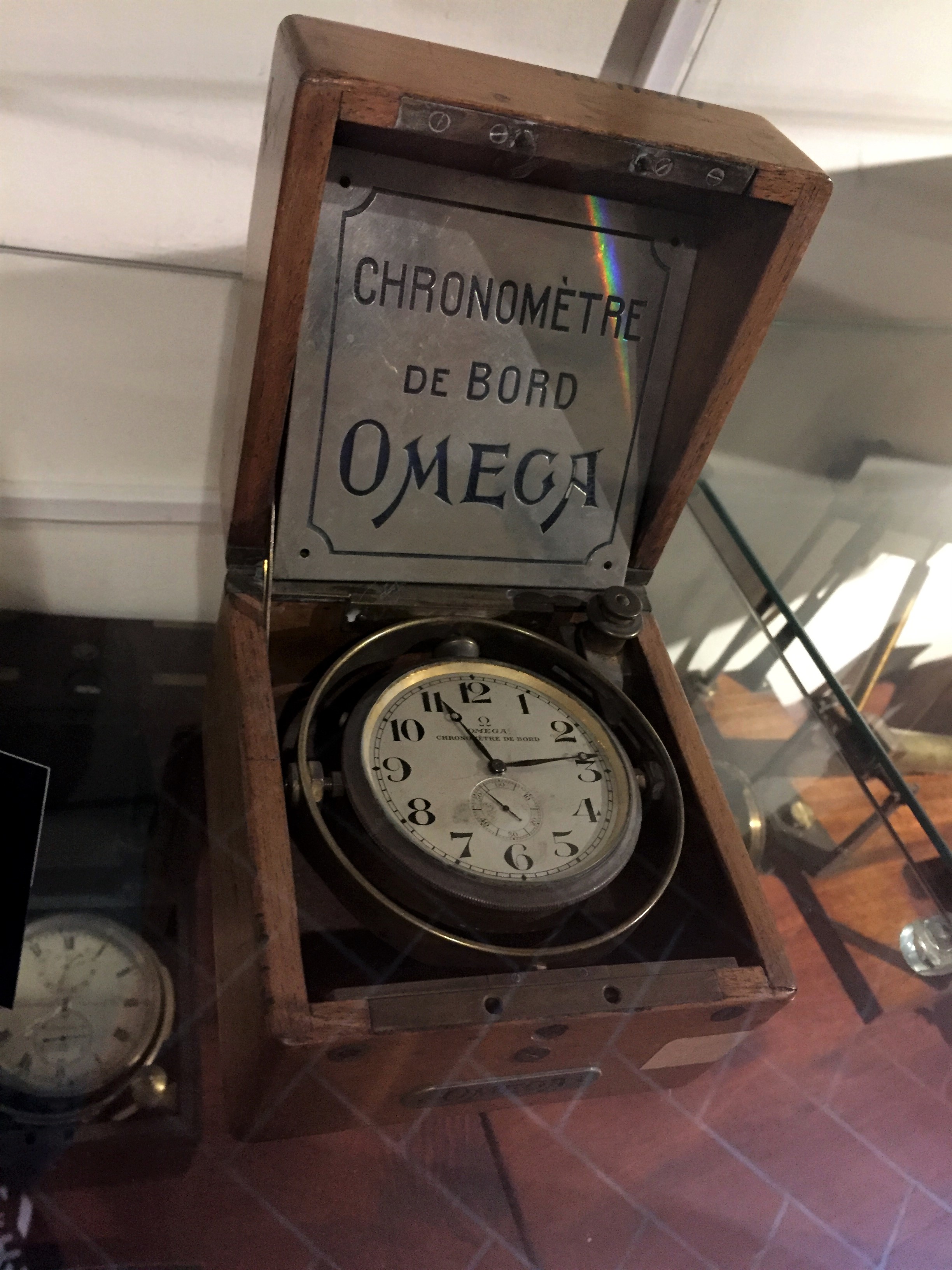
Omega chronometer on display in the Astronomical Observatory of Quito, Ecuador
More recently, it is interesting to note that the detent escapement has been developed into a pivoted detent escapement, originally proposed by Derek Pratt and eventually patented in 2008 by Peter Baumberger and Jean-François Mojon.
Why is the Co-axial escapement so important?
Enter Dr. George Daniels – hailed as one of the most influential watchmakers of all time, and talked about in the same breath as the likes of the great Abraham-Louis Breguet. During the late 1960s and early 1970s, when the arrival of quartz watches heralded a crisis for mechanical watchmaking, he did not see the battery power of quartz as an evolution in the in the field of mechanical watchmaking, and instead harboured the ambition of creating a movement that would happily tick away on his person for up to 15 years, uninterrupted.
“The quartz watch is entirely dependent on its battery and it has the dedicated ambition to commit suicide as soon as possible.” – George Daniels
At the time, this was not feasible as the lever escapements in use required servicing every few years to clean and lubricate it.
In order to achieve his goal, the need for servicing a mechanical watch, or more specifically the need to lubricate its components, would need to be removed. Here presents the aforementioned ‘problem’ needing to be identified in lever escapements: friction.
In a lecture delivered by Dr. Daniels to the American Watchmakers Clockmakers Institute (AWCI) in 1990 (there’s a link at the end of this article), he describes that in the lever escapement, as the pallet fork pushes and locks with interlocking gear-teeth, there is a degree of friction for all but the tiniest part of the motion – this is present for approximately 330 degrees of a full 360 degree rotation. If this could be improved upon, then the requirement for lubrication diminishes.
He set about reducing this friction by leveraging the benefits discussed earlier from the detent escapements, namely the impulse being created with a direct push as opposed to a push which slides against a gear-tooth and creates friction. Dr. Daniels explains this difference very succinctly in the video below:
The result of his endeavours, after several evolutions in his escapement designs (which he discusses in the AWCI lecture), was George Daniels’ Co-axial escapement in 1974 – named such as it introduced a second gear wheel to the same axle, and added an additional pallet such that the impulse can be applied as a direct push, as opposed to the sliding force with a traditional lever escapement pallet fork, and apply this push in both directions thus solving the single-direction problem of the detent escapement at the same time.
This direct push all but eliminates the friction problem, as well as other minor discrepancies such as changes in temperature and humidity and their effect on the viscosity of the lubricant. We have tried to show this below:
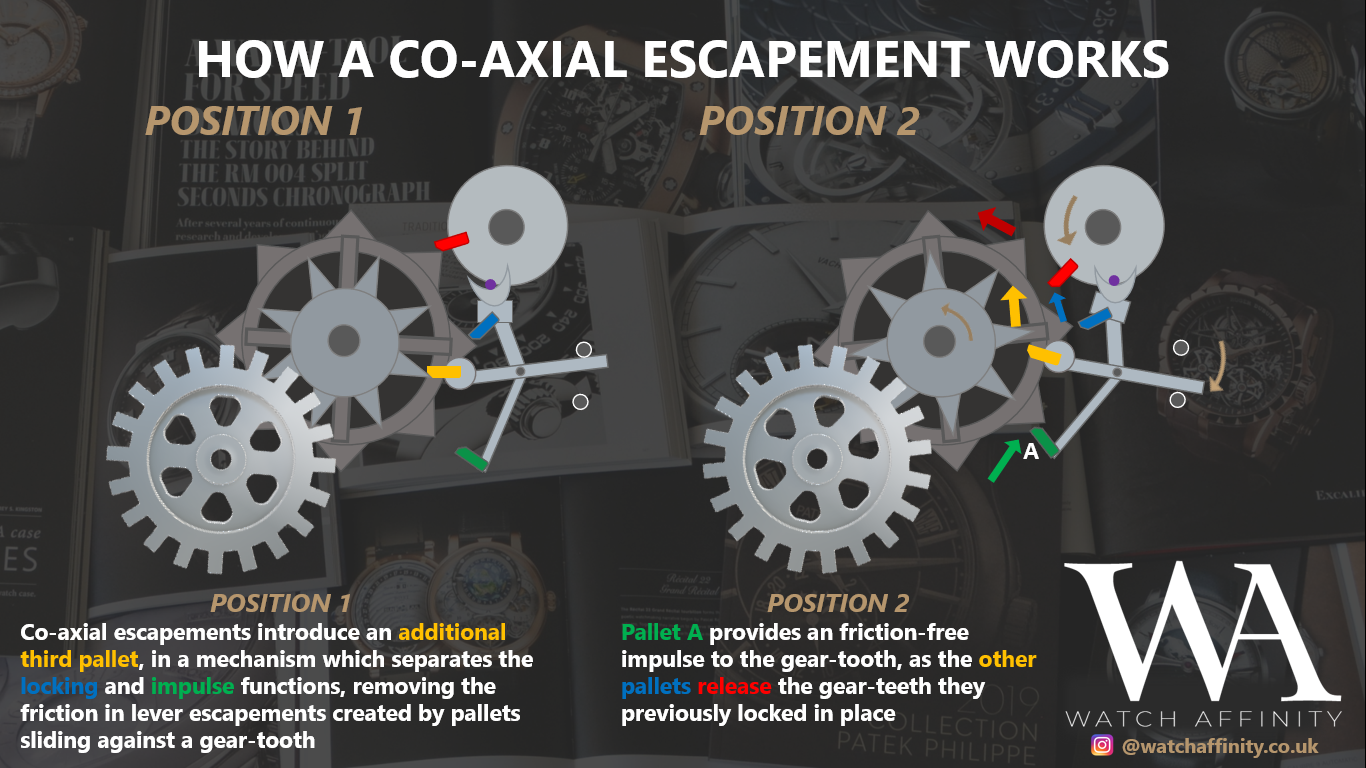
It is interesting to note that leading up to 1974, it took what I can only imagine to be an incredible 6, inordinately frustrating years to be granted the patent for his invention, primarily as the reviewers did not understand the significance of what he had achieved and the important subtleties between the co-axial escapement compared with other existing escapements.
However, once it was granted, Dr. Daniels spent the latter half of the 1970s and many years after presenting his idea to folks within the Swiss watch industry, including Patek Philippe – indeed the first wristwatch ever fitted with a co-axial movement was a Patek Philippe Nautilus, which Daniels himself wore for many years and is today on display in the Clockmaker’s Museum exhibit at London’s Science Museum. The initial interest was slow as this was the era when the watch world saw quartz as the future, with brands therefore reluctant to invest in retooling their manufactures to build the components to cater for co-axial escapements for mechanical movements.
Finally, in the 1990s, then CEO of the Swatch Group Nicholas Hayek saw the value in what Dr. Daniels had created and acquired the patent for Omega. They proceeded to successfully industrialise the components and Omega’s first co-axial watch was released in 1999, a DeVille model housing calibre 2500 – an ETA base which for the first time was coupled with Daniels’ co-axial escapement – a true horological advancement.
Today, the co-axial escapement movement is a fundamental part of Omega’s catalogue and is included in just about all their watches. There are a handful of other watchmakers using co-axial escapements today too, including Dr. Daniels’ own protégé, Roger Smith.
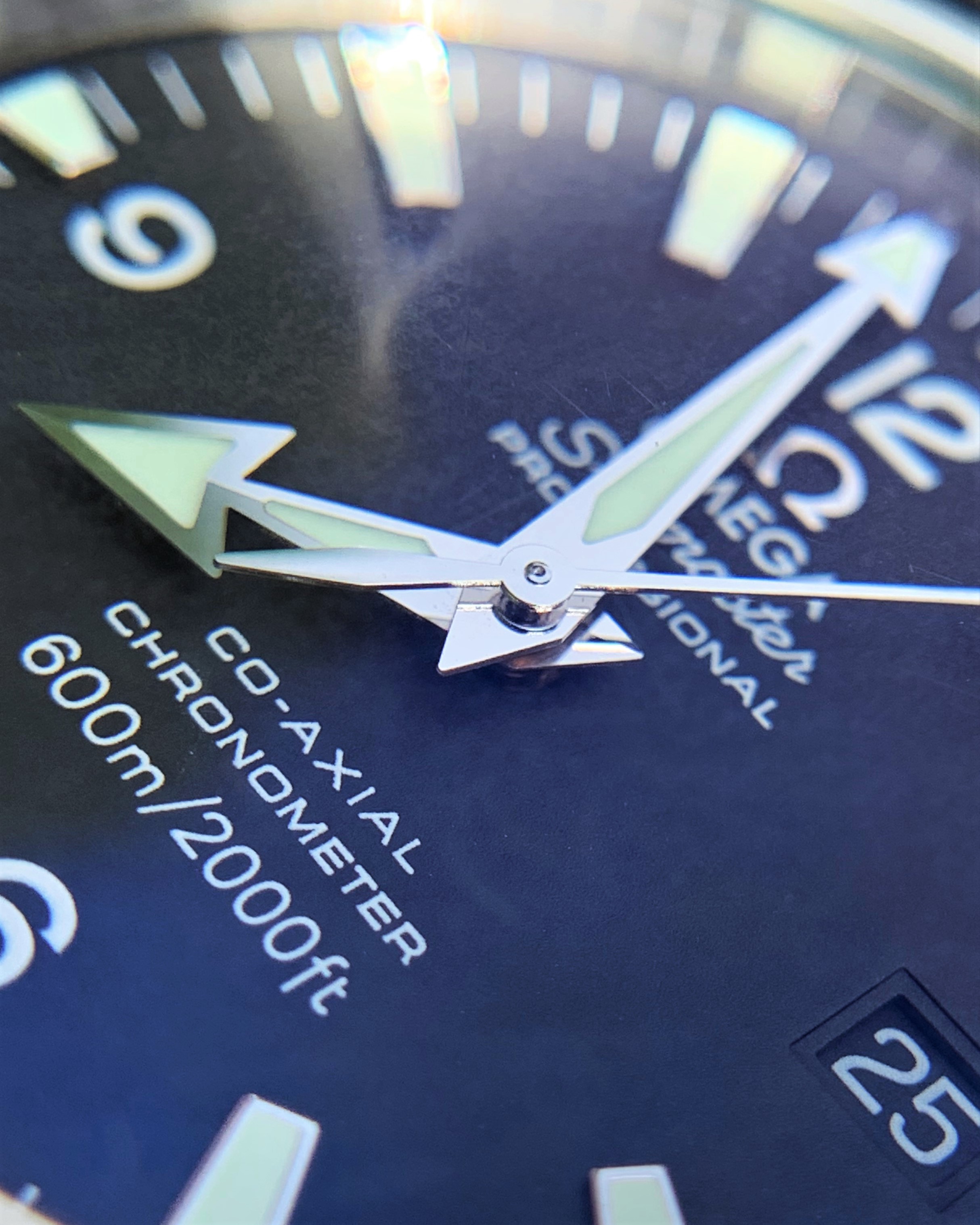
Of course, there is a lot more that could be said about escapement design and the co-axial escapement itself, however hopefully this explanation serves to provide some insight into what George Daniels’ Co-axial escapement is, the problem it solves, and why it is considered to be such a hugely important horological advancement.
For anyone interested in learning more about the life of George Daniels, I can highly recommend his autobiography, ‘All in Good Time’ which is available here (affiliate link).
If you have any questions, please get in touch via our Contact page, or via our Instagram.
Further reading on the Co-axial Escapement:
1. There is a great recent article by Jack Forster on Hodinkee about escapements – if this article has whetted your appetite, I encourage you to give this article a read, too.
2. If you want to learn more about the co-axial escapement, and other iterations designed by Daniels leading up to this, you can watch the lecture given by Dr. Daniels to the American Watchmakers Clockmakers Institute in 1990 here:
Co-axial escapement lecture, Dr. George Daniels, American Watchmakers Clockmakers Institute (1990)
You might also be interested in:
- Recommended Reading: “All in Good Time – Reflections of a Watchmaker” by George Daniels
- A Visit to the Clockmakers’ Museum, London
- Influential Watchmakers: Abraham-Louis Breguet
- Watch Stationery and Gift Ideas
- Watch Books, Watch Boxes and more at the Watch Affinity Shop on Amazon (commissions earned)
As an Amazon Associate, I earn from qualifying purchases – thank you for your support

